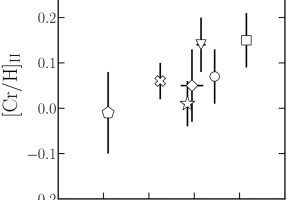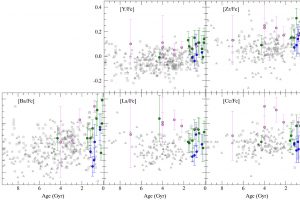Stellar parameters and chemical abundances from GAPS. The study: “The GAPS Programme at TNG XXV. Stellar atmospheric parameters and chemical composition through GIARPS optical and near-infrared spectra” of M. Baratella (UniPd) recently appeared on A&A

Several astronomical studies rely on the precise determination of the chemical abundances of stars. For instance, the determination of chemical abundances of stars in different sites of the Milky Way, or with different age or evolutionary phase, can provide precious information on the evolution of our Galaxy. However, recently it has been discovered that spectroscopic determination of stellar chemical abundances
» Read more


